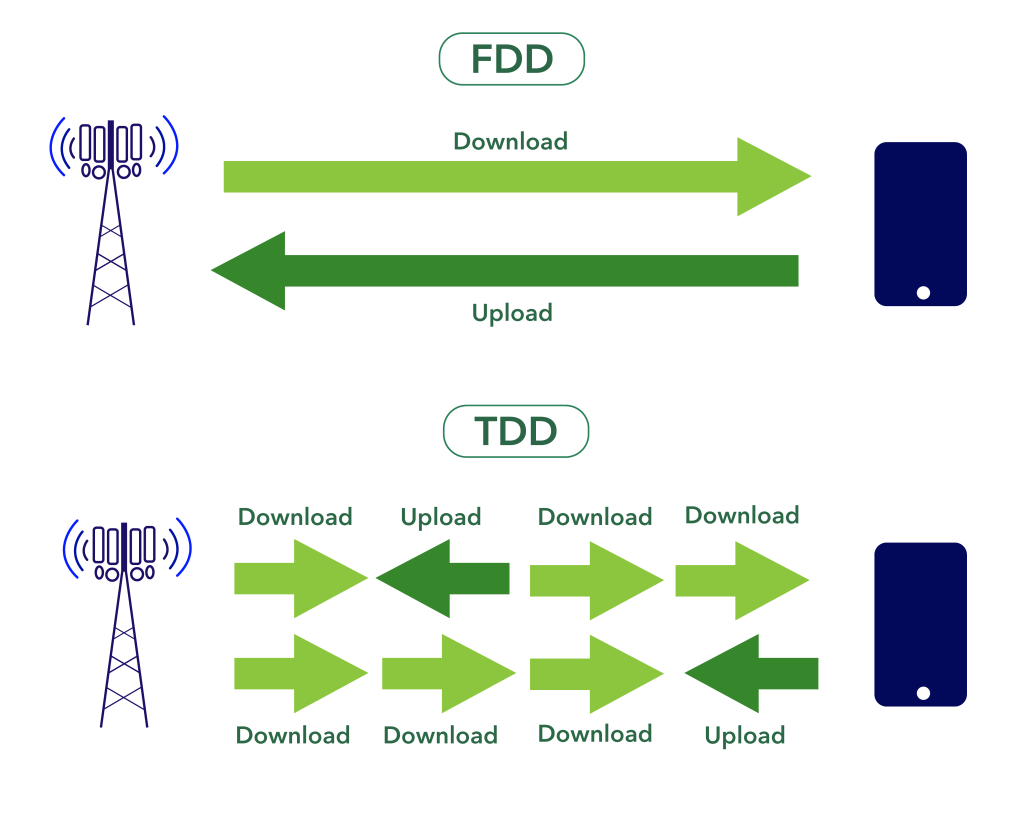The key engineering, legal and policy issues
TDD
TDD, or Time Division Duplex, is a technique for sending and receiving communications over the same frequency band. Uplink and downlink traffic are separated by the allocation of different time slots in the band. Frequencies assigned in this way are also referred to as unpaired spectrum.

The use of TDD technology for mobile spectrum licences has become increasingly widespread in the years since 2010, first for 4G and subsequently for 5G. Unlike its predecessor Frequency Division DuplexFDD, or Frequency Division Duplex, is a te..., or FDD (see separate Glossary entry here) TDD frequencies coexist without the requirement for a guard band. In addition, they allow for an asymmetry in uplink and downlink usage without frequencies remaining underused as might be the case with paired frequencies.
China was an early supporter of TDD-based technology. Prominent bands that use the technique include 2.3 GHz and 3.5 GHz. The 2.6 GHz band has been assigned by countries for both FDD and TDD band plans but both China and the USA support unpaired usage.
